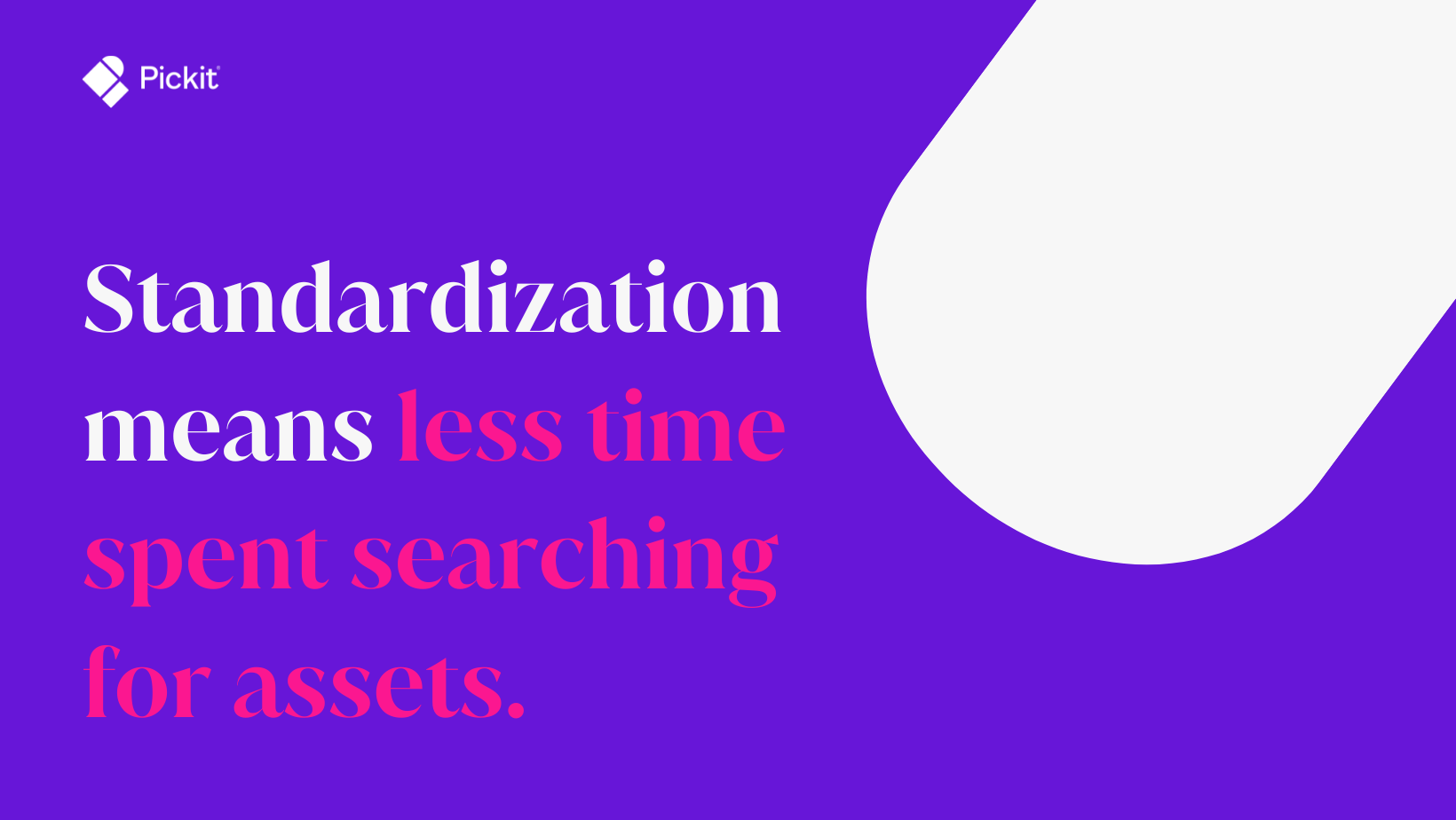Marketing teams: Reclaim your time with better file management
Marketing teams today are often asked to do more and more, even with small teams and lean budgets. If this sounds familiar to you, then time is likely your most valuable resource.
So how can you use your time more effectively?
One is by improving your file management. Just as mise en place (French for “set up”) makes cooking more efficient, spending a bit of time up front to standardize and organize your files will make creating and collaborating go more smoothly. Breaking tasks down into smaller steps, and allocating time for them, keeps you from scrambling to find things at the last minute. By having everything you need ready and in place, you won't have to interrupt your workflow to search for things. This concept easily translates to work outside the kitchen as well.

Obviously, marketing teams are up against a lot of competition when trying to gain people’s attention. There are more than 600 million blogs in the world, according to Ahrefs, together publishing about 2.5 billion blog posts per year. To be effective, your team needs to use time wisely. Here are some things you can do to improve your file management—and save time:
Standardize naming conventions
Save your team from the hassle and disruption of "hey, do you have this deck?" messages.
Naming conventions refer to the way files are named. Typically, file names include elements such as campaign names, dates, and asset types. Other relevant information can be included based on your team's specific needs—such as the initials of a subject matter expert involved with a project. Establishing clear and consistent file naming conventions improves efficiency and reduces errors. Standardization leads to less time spent searching for things. For teams with members in multiple countries, agreeing on consistent spellings and date formats matters, too.
Standardization is a form of quality control that helps with all of the content you and your team produce. When routine tasks are streamlined through standardization, your team can focus their time and attention on what really matters. Onboarding new team members or working with vendors is simpler when you have standardized procedures and documentation, too.

Use metadata
A file’s name provides some basic information about the file, but metadata adds details and context. Tags, keywords, or categories can provide information that wouldn’t be apparent from the filename alone. Using metadata improves searchability, making it more likely your team will be able to find what they need. Adding authors, descriptions, and other information can make finding your files a breeze. Metadata can also include version information, bringing us to...
Version control
Annual Report_Final_V4_UseThisOne_FINAL
We’ve all seen it. Working collaboratively can have huge upsides, but it can also lead to multiple versions of the same file. Version control issues result in inconsistency, errors, confusion, headaches, and wasted time and effort. Using the wrong version of something can mean publishing outdated product info, an old logo, or other mistakes that harm your brand.
Spending a bit of time up front establishing and using some file management best practices means your team will be able to stop wasting time searching for files, sending each other outdated versions of files, or creating duplicate content. Instead, spend your time doing what gets you the most results.
Want to learn more about digital asset management? Talk to one of our product specialists to learn how it can help you.